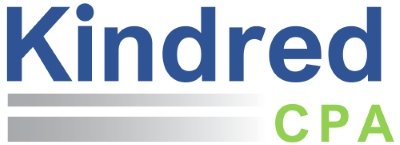To download a handy chart of 2024 dollar limits for employee benefit plans and various tax items, click on the link below: 2024 Dollar Limits…
The Paycheck Protection Program is the most talked about business provision of all the recent COVID-19 legislation. Many small businesses have applied and received loan proceeds intended to keep people employed during this economic downturn. It’s a great program – but be sure you follow the rules, because there’s a warning attached.
The SBA issued their “interim final rule” (yes, that sounds like an oxymoron to us too) on April 2 that provides additional guidance on calculating loan amounts and, equally important, the amount that can be forgiven. It says the amount of loan forgiveness will depend on a) what you spent the proceeds for; and b) the ratio between payroll and non-payroll expenses.
These Four and No More
Approved expenses include these amounts paid over the 8 weeks following the date of the loan:
- Payroll costs: salaries, wages, commissions, tips, vacation, sick leave, health insurance premiums, and retirement contributions paid to US employees
- Interest on mortgage obligations incurred before February 15, 2020
- Rent payments on leases dated before February 15, 2020
- Utility payments under service agreements dated before February 15, 2020
Of these four allowable categories, 75% should be allocated to payroll costs and 25% to non-payroll costs.
Here’s the part you need to pay attention to – what happens if you spend PPP funds for something other than these four categories? Here’s the strong language directly from the interim final rule:
If you use PPP funds for unauthorized purposes, SBA will direct you to repay those amounts. If you knowingly use the funds for unauthorized purposes, you will be subject to additional liability such as charges for fraud. If one of your shareholders, members, or partners uses PPP for unauthorized purposes, SBA will have recourse against the shareholder, member, or partner for the unauthorized use.
Did you see that? Business owners can be held personally liable for misuse of PPP funds. In the loan application, an authorized representative of the company certifies that the funds will be used to retain workers and maintain payroll or make mortgage interest payments, lease payments, and utility payments. No other types of operational expenses or capital expenditures are on the list. The central purpose of the PPP is to keep your employees on the payroll and keep the lights on.
Keep Good Records
How will the SBA know how you spent the money? The interim final rule indicates that the SBA will issue additional guidance on loan forgiveness, but borrowers will need to submit documentation to their lender supporting their request for loan forgiveness, which the lender is responsible for verifying. That means you need to keep good records on how you spend that money in order to substantiate your forgiveness claim.
And don’t forget the other parameters required to comply with the PPP. You need to retain the same number of employees and same wage level over the course of the 8-week forgiveness period. If you have had to let some employees go between February 15 and April 26, 2020 as compared to February 15, there’s a provision that allows you to add those employees back into your payroll before June 30, 2020.
And finally, remember to submit an application to your lender for loan forgiveness after the 8-week period has passed.
What About Other Expenses?
It’s possible – maybe even likely – that your business is having trouble meeting other expenses outside of these allowable categories. The PPP does not appear to be the appropriate avenue for dealing with these other operating expenses. If your business needs funds for this purpose, the SBA has the Economic Injury Disaster Loan (EIDL) program available through the same lenders, which includes a $10,000 grant that does not need to be paid back. If you have questions about the EIDL and/or PPP, contact your lender or visit the SBA website.



